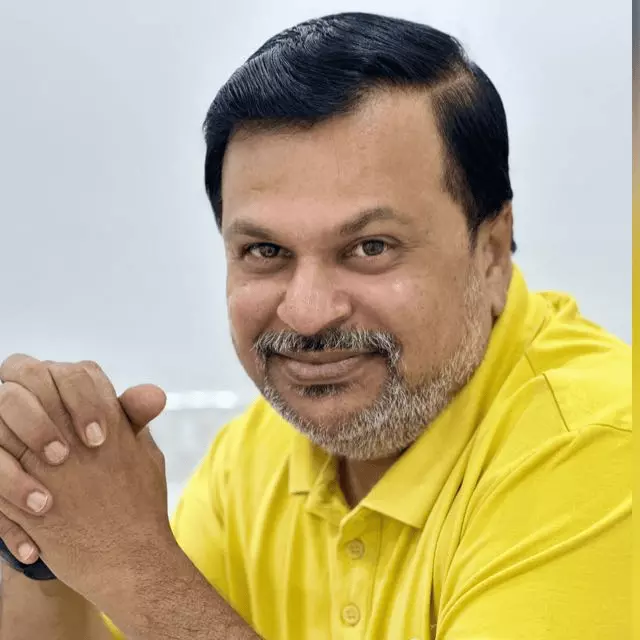KCR remembers Karpatra Maharaj, but not Sujana Chowdary
Who is Karpatri Maharaj, referred to by KCR? He 'forgot' the name of Sujana Chowdary, but remembered his politics. Maybe, he wanted to obliquely distinguish between "notoriety" and "popularity".

HYDERABAD: Telangana Chief Minister K Chandrashekar Rao doesn't easily (perhaps, habitually deliberately) recall the name of 'Sujana' Chowdary, a former Union Minister who crossed the floor to the BJP from the TDP to "save his skin", following raids by Enforcement Directorate, Income Tax and the CBI. Ironically, KCR had a video clip of raids on Sujana Chowdary played for the media, as part of his aggressive attack on the Modi regime.
He acted as if he didn't remember his name and asked those around: "What is his name… that man who joined from TDP in BJP…? Some name…"
Maybe he doesn't want to "remember" the name.
But, he surprisingly took the name of one Karpatri Maharaj of Banaras. How did he remember that name with whom he surely would never have interacted. Yet, what an elephantine memory it is of KCR to recall the name of a not-so-popular a saint.
Maybe, he wanted to obliquely distinguish between "notoriety" and "popularity".
Referring to the "Hindutva" campaign by the BJP, KCR said: "Hindutva as being propagated by these people is not right and the same was written in a book by Karpatra Maharaj in Banaras 60 years ago. We all consider Kasi as a large pilgrimage centre. A lot of people want to die in Kasi. Some even buy a small room in their last stages and live there until their death." said KCR in his broadside against Narendra Modi and the BJP at his Sunday evening press conference.
Who is Karpatra Maharaj? Actually, his name is Karpatri Maharaj.
KCR himself said: "If you search, his detail is easily available on the internet." But, many wouldn't have searched for this.
His original name is Hariharananda Saraswati. He acquired the name of Karpatri Maharaj as he would eat what he would get on his hand (meaning the bowl -patra).
Born as Harnarayan Ojha, according to Wikipedia, in a village called Bhatni in Pratapgarh of Uttar Pradesh, on August 11, 1907 he was a sanyasi (who renounced earthly pleasures). He died in 1980. Owing to pressure from his father, Harnarayan, who was married when he was nine fathered a child when he was 19 — only to fulfil the condition of his father — and left home in search of his quest to find truth.
After his education in grammar, Vedanta and Darshanas, including a three-year stint in the caves of Himalayas, he was ordained as Sanyasi.
He launched "Dharm Sangh" and propagated Dharma and tried to revive the lost traditions in Varanasi.
He had reconverted those who moved to Islam into Hindu faith. His group was jailed on August 14,1947 for opposing partition of India and raising slogans: "Bharat akhand ho". His is the first group to be arrested in Independent India, according to Wikipedia.
He was a follower of Shankaracharya school of thought, Advaita.
Wikipedia said about his politics: "In 1948, Swami Karpatri founded the Akhil Bharatiya Ram Rajya Parishad, a traditionalist Hindu party. He led a movement against the Hindu Code Bill. He was also a prominent agitator in 1966 anti-cow slaughter agitation. On 18 April 1948, he founded a newspaper called Sanmarg which promoted Sanatan Dharma and also advocated against the Hindu Code Bill and voiced opposition on cow slaughters."
He authored 24 books in his lifetime with in-depth observations and analysis on many sensitive subjects.
What KCR had referred to was a book, "RSS aur Hindu Dharma", which deals with structural criticism of Sangh-sponsored anti-Shastra ideology.
KCR leapfrogged from one subject to another with elan. He talked about 6,500-tmcft reservoir in Zimbabwe and the chronology of different reservoirs across the globe.
And, hardly he had referred to his notes, but delivered a discourse-like address to the media extempore, stunning one and all for two and a half hours non-stop.



